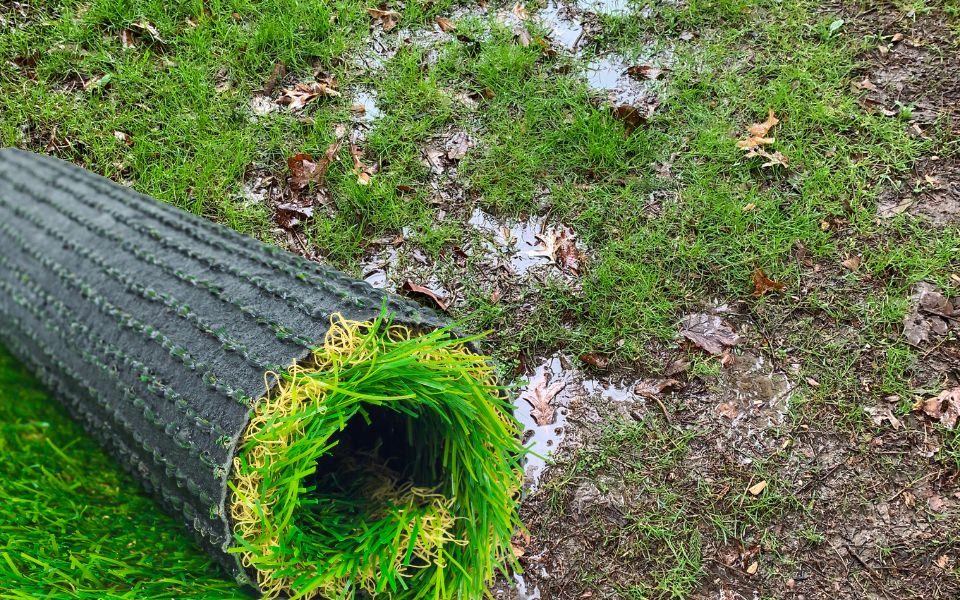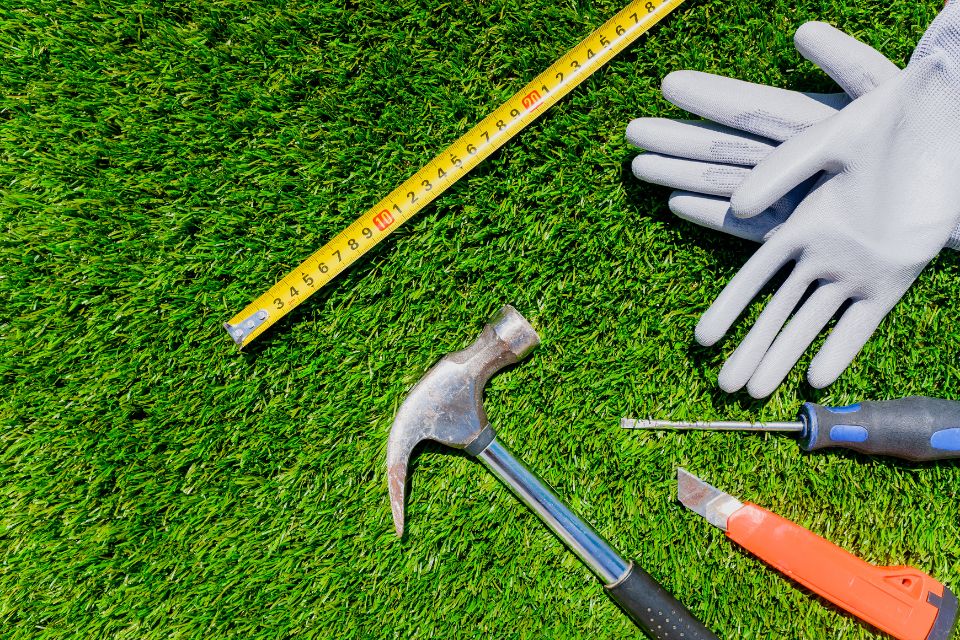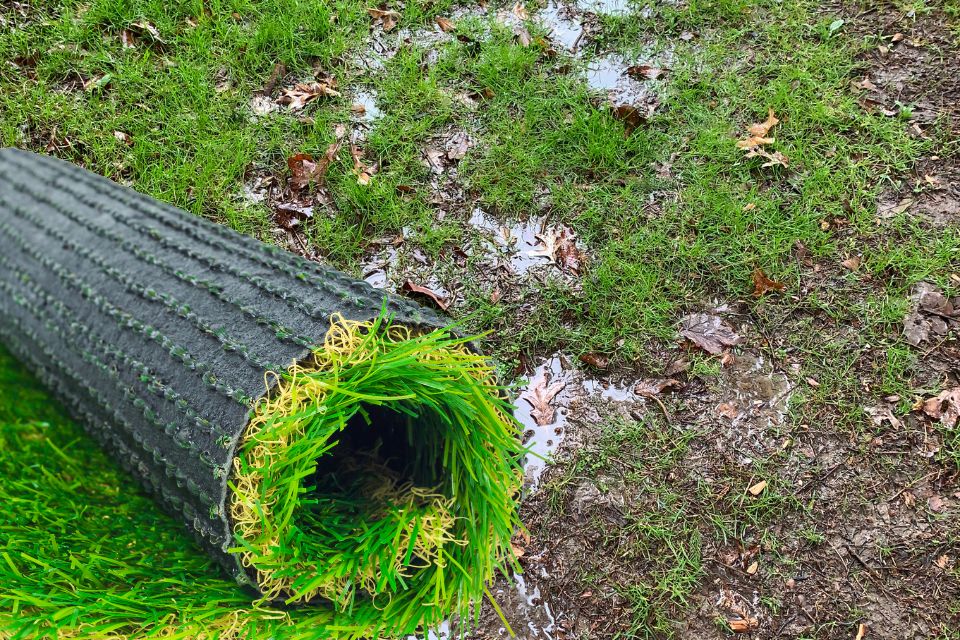
Can I Install New Artificial Grass Over Existing Turf?
Can I install new artificial grass over existing turf? Yes, installing new artificial grass over existing turf is possible in certain situations, but it requires careful consideration and preparation. Here’s what you need to know.
Installing new artificial grass over existing turf can be a practical and cost-effective solution for rejuvenating outdoor spaces. However, several factors need to be considered to ensure a successful installation process and optimal long-term performance. Let me explain the steps involved in installing artificial grass over existing turf, potential challenges, and frequently asked questions to help you make an informed decision.
Assessing the Feasibility
Before embarking on the installation process, it’s essential to assess the feasibility of installing new artificial grass over existing turf. Consider the following factors:
Condition of the Existing Turf
Evaluate the condition of the existing turf to determine if it is suitable for installation. Ensure that the turf is relatively flat, free of major damage, and has adequate drainage.
Compatibility of Materials
Ensure that the new artificial grass is compatible with the existing turf and suitable for installation over it. Some types of artificial grass may not adhere well to certain surfaces, so it’s essential to choose the right product.
Preparation Steps
Once you’ve determined the feasibility of installing artificial grass over existing turf, follow these preparation steps:
Clearing Debris
Thoroughly clean the existing turf to remove any debris, vegetation, or organic matter. Use a leaf blower, rake, or power broom to clear the turf effectively. It may be wise to add some sort of substrate to make it even and more sturdy when stood on. Using a compactor (Wacker plate) or a manual tamper to compact it and level it.

Addressing Drainage Issues
Check the drainage system of the existing turf to ensure that water can flow freely and efficiently. Make any necessary adjustments or improvements to the drainage system before proceeding with the installation.
Adding a Weed Barrier
To prevent weeds from growing through your new artificial grass, consider adding a weed suppressing membrane over the existing turf. You may want to use some sub-base as well. This will help suppress weed growth and provide a stable base for the artificial grass.
Installation Process
Once the preparation steps are complete, you can proceed with the installation process:
Laying Out the Artificial Grass
Carefully lay out the new artificial grass over the existing turf, ensuring that it is positioned evenly and securely, with the pile facing the property, ideally. Use adhesive or seaming tape to join the seams and secure the edges of the artificial grass.
Trimming and Shaping
Trim and shape the artificial grass as needed to fit the contours of the area. Use a sharp utility knife like a Stanley knife to cut the grass to size, ensuring clean and precise edges.
Securing the Edges
Secure the edges of the artificial grass with landscape staples or galvanised nails to a sturdy structure, like a treated timber frame, to prevent shifting or movement. Use a knee kicker if possible to stretch it out, to avoid creases. Ensure that the edges are securely anchored to the structure for a stable installation.
Considerations and Limitations
While installing new artificial grass over existing turf can be a convenient option, there are some limitations and considerations to keep in mind:
- Compatibility: Ensure that the backing of your new artificial grass is not too soft and bendy. Be aware that in hot seasons, the artificial grass turn to soften a bit, hence the need to use the substrates as a base.
- Surface Preparation: Proper surface preparation is essential for a successful installation. Neglecting to use the right substrate can result in problems with the artificial grass installation.
- Long-Term Performance: Consider the long-term performance and durability of the installation. Factors such as a sturdy base, (using MOT type 1 with sharp sand on top or granite dust), drainage, compaction, and stability may impact the lifespan of the artificial grass.

Frequently Asked Questions (FAQs): Can I Install New Artificial Grass Over Existing Turf?
Q1: What is the main benefit of installing new artificial grass over existing turf?
Installing new artificial grass over existing turf can save time and money, especially if you live in a terrace house where removing the old turf could be a bit of an inconvenience.
Q2: Can I install artificial grass over any type of existing turf?
In most cases, artificial grass can be installed over existing turf, but it’s essential to ensure that the existing turf is relatively flat, using some substrate, free of major damage, and has adequate drainage.
Q3: How do I prepare the existing turf for installation?
Preparation steps include clearing debris, addressing drainage issues, adding a sub-base and weed membrane to prevent weed growth through the new artificial grass.
Q4: What tools and materials do I need for the installation process?
You’ll need basic landscaping tools such as a leaf blower, rake, sharp utility knife, scissors, artificial grass adhesive, seaming tape, screws, some timber or metal for the edging, landscape staples or nails, and a weed suppressing membrane.
Q5: How long does the installation process take?
The installation process can vary depending on the size of the area, the condition of the existing turf, and other factors. On average, it may take a day to complete an installation of approximately 20 sqm.
Q6: Can I install artificial grass over existing turf myself, or do I need professional assistance?
While DIY installation is possible, it’s essential to have some experience with landscaping and proper surface preparation techniques. Ideally you would want a professional installation, as the ideal method in installing artificial grass is a more complex process.
Q7: Will installing artificial grass over existing turf affect drainage?
Proper surface preparation and addressing any drainage issues beforehand can help ensure that water drains efficiently through your new artificial grass.
Q8: How do I ensure a smooth transition between the existing turf and the new artificial grass?
Using the right sub-base, suppressing weeds, trimming and shaping the artificial grass as needed and securing the edges properly can help create a seamless transition between the two surfaces.
Q9: Can I remove the new artificial grass and revert to the original turf if needed?
While it is possible to remove the artificial grass, it may require significant effort and expense, so it’s essential to consider the decision carefully before proceeding with the installation.
Q10: Are there any long-term maintenance considerations for artificial grass installed over existing turf?
Regular maintenance, including cleaning, brushing, and occasional repairs, is essential to ensure the longevity and optimal performance of artificial grass installed over existing turf.
Final Thoughts on Installing New Artificial Grass Over Existing Turf
Installing new artificial grass over existing turf offers a convenient and cost-effective solution for transforming your outdoor space. By assessing the feasibility, following proper preparation steps, and carefully executing the installation process, you can rejuvenate your landscape with minimal hassle. However, it is best to remove the existing turf, if possible, and use the right substrate and weed membrane. In situations where the property is a mid-terrace house and there has been no access to the back garden, but only through the house, some homeowners have avoided the hassle of running the muddy wheelbarrows through their home and installed the synthetic turf on their existing lawn.
If you a looking for a reputable artificial grass installer in Milton Keynes, London, Bedfordshire, Berkshire, Buckinghamshire, Cambridgeshire, Hertfordshire, Northamptonshire, or Oxfordshire, do not hesitate to contact us at 0800 433 2353. Alternatively, you can contact us via email at enquiries@miltonkeynesartificialgrass.co.uk or click here.
